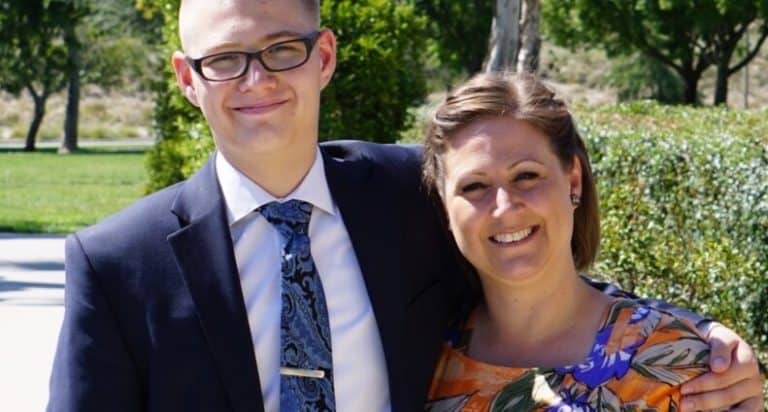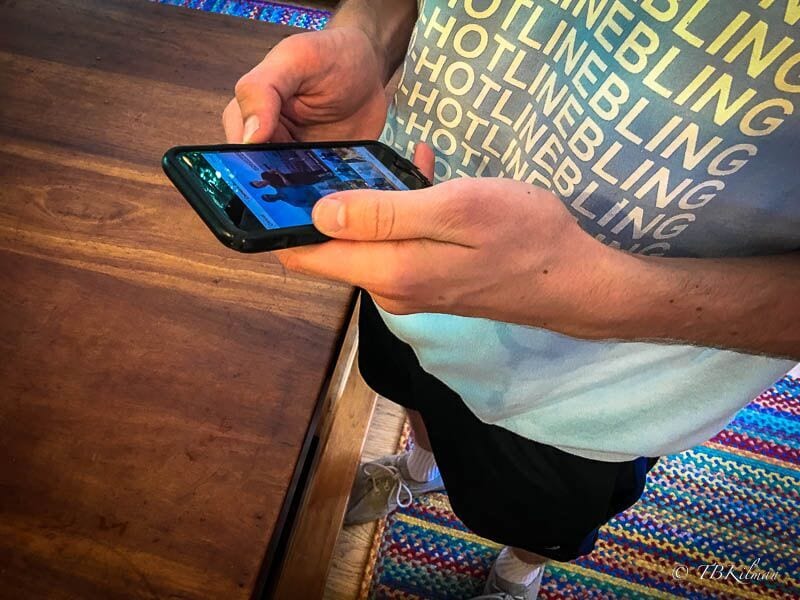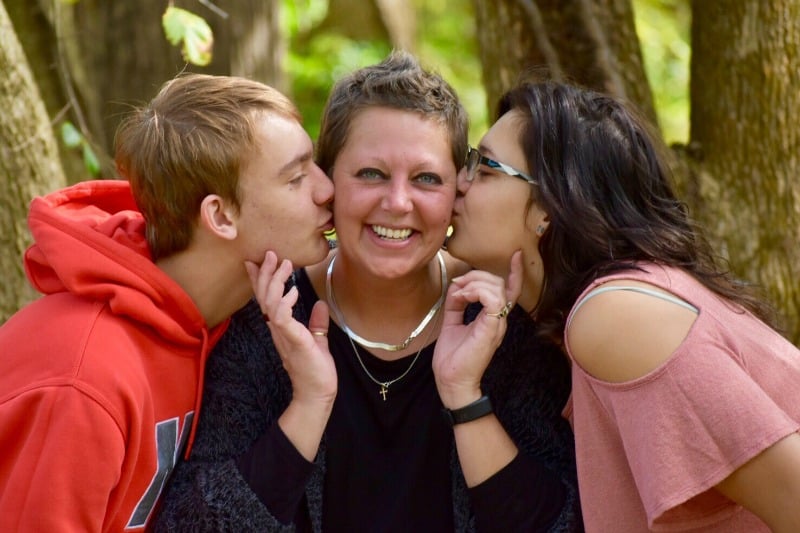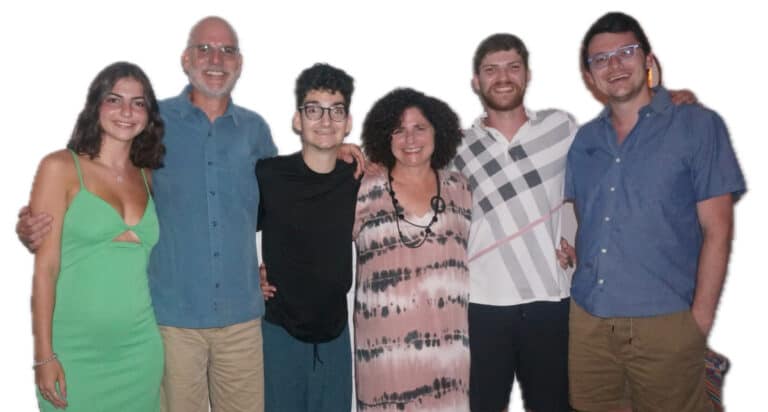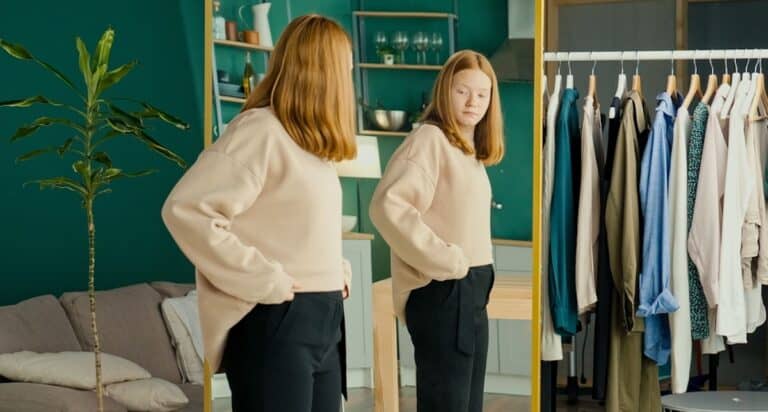My oldest daughter leaves for college this fall. It’s taken me every bit of her 17 years to finally be at peace with being a stay-at-home mom. It’s hard to type those words and even harder to read back—facing the truth that I have lost so many years to an internal war that I have allowed to rage inside of me unchecked.
Looking back, I have two distinct buckets of memories.
The first bucket held all my joy and fulfillment from being a stay-at-home mom—getting to see the world through my children’s eyes, helping them make connections, watching their personalities develop, and seeing in real time the impact my presence was having on their language and social skills.
The second bucket was filled to the brim with self-recrimination and judgment, rooted in the belief that I wasn’t doing my part to carry the load—the house was never clean, and the laundry was never completed; the to-do list was always growing.
Those buckets became the only lenses through which I viewed and judged the day—and, by extension, myself.

I always felt like I was not doing or contributing enough
My self-worth was all wrapped up in doing for others—a losing proposition magnified by the weight I placed on the fact that I didn’t earn a paycheck. I judged myself a ‘good’ stay-at-home mom on the days when I was super productive—when I engaged well and often with my kids and also prioritized cleaning and cooking. I judged myself a ‘bad’ stay-at-home mom on the days when I chose rest or self-care over the to-do list.
The feeling of not doing or contributing enough became my constant companion and my nearest enemy, preventing me from truly relaxing into rest on any day I deemed I had not been a harsh enough task master to myself.
No one can prepare you for feelings that come with having kids
No person or book can prepare you for the complexity of feelings that come with having kids—the shedding of the old you and the birth of a new you that exists no longer in relation to your wants and needs but instead to another’s.
Shortly after my first child was born in 2006, I learned of a book called Mommy Wars. I remember running out to the store to buy it, splurging for the full-priced hardcover so that I could get the answer to my question—whether it was better for me to be a stay at home mom or a career mom—sooner rather than later.
Feverishly, I read the book all the way through, only to be disappointed that there was no great secret revealed and no universal path laid out. The author concluded it was where mom was happiest that was best for the child.
I was always easiest on myself during the baby years
In 2008, I gave birth to my second child, and in 2013, my third. As the years went on, I alternated between spurts of peace and spurts of restlessness. My ability to offer myself grace was always easier during the baby years, which were so universally exhausting that I truly believed there wasn’t enough time to do all the things.
As the kids grew older, I learned to predict how I felt about myself by the season. As summer approached, I felt greater worthiness because I was needed at home. I deemed my presence good for the family—I was performing a service. Inevitably, though, as fall approached, I would start to get down on myself, anticipating the kids being out of the house—the need for me to be at home now unwarranted.
On my best days, I could envision going back to all my old jobs and bringing to bear all my acquired stay-at-home mom expertise. On my worst days, I knew no one would hire me with my atrophied, irrelevant skills.
Over the years, I celebrated my fellow stay-at-home mom friends who, by choice or necessity, made the transition back to work, all the while feeling jealous of their paycheck and—what I assumed to be—their validated sense of purpose. Secretly, I wondered what they thought of me—worrying, at worst, that they saw me as reckless and overly privileged to be a stay-at-home mom for as many years as I had.
Not returning to work came at a cost
There were many times I went searching for a paycheck, but the perceived cost in disruption to our lives always outweighed the potential money that would come in.
That decision to not return to work came at a cost.
Last year, we decided to allow our middle child to apply to a private girls high school. We were thrilled when she was accepted but knew we couldn’t afford the full-priced tuition year after year with our oldest starting college the following year. Financial support from the institution was only offered in cases where both parents contributed to the income—in our house, only one parent contributed.
It was in writing a letter of appeal to the financial aid office that I finally realized the truth that I had been running from for as long as I had been a mom–being a stay-at-home mom didn’t happen to me, nor was it imposed upon me. I chose it again and again, year after year.
For seventeen years, I was afraid to claim that truth because I didn’t believe I was allowed to love a job that didn’t come with a paycheck.
There was a financial price to be paid for being a stay-at-home-mom
If you visit our home, you’ll notice our outsides don’t match our insides. Outside, our home has new siding, soffits, and gutters; a custom entryway door with glass transoms on the side; and new windows, all courtesy of an insurance settlement from when our fireplace encasement detached from the house on a windy day in January 2019.
Inside, you’ll find builder’s-grade carpets and cabinetry, countertops, and lighting fixtures from when the house was built in 1995. Prefab wood floors adorn our foyer, and there’s water damage in the powder room from where my son flooded the bathroom by leaving on the sink when he was a toddler. Rolled vinyl tile crosses the expanse of our kitchen—in the most heavily trafficked areas, the edges peel up and the floorboard underneath is warped.
The couches my husband and I loved to nap on when we were dating in 2001 remain the most comfortable place to stretch out, even as the sage canvas fabric has faded to hombre from 20+ years of uneven sun exposure. You’ll find an oak-wrapped tile-top table in our kitchen purchased from before we were married—you can see where years of cleaning have caused the surface finish to bubble and peel.
The sectional that seemed so fancy and extravagant in 2001—4 recliners!—remains the centerpiece of our family room; only now, to extend the recliner in the spot directly facing the TV, you need to know the special sequence—sit, lean back, wedge your heel both inward and downward simultaneously to get the lift going, then push with your back until the recliner is fully extended.
We rarely choose vacation destinations where the lodging isn’t free—always leveraging family-owned or rented locations—and we tend to drive our cars until the investment to maintain them exceeds what would be required to purchase a new car.
I used to care about it more—having what other people have—but I don’t feel as captive to that prison anymore.
Suddenly, all those decisions I made make sense to me
I don’t know why it all makes sense to me now.
Maybe being at home doesn’t feel so stifling because I’m close enough to where I really feel like I can go back to work if I want. Maybe it’s because I can see how all the puzzle pieces fit together in a way I just couldn’t while I was beating myself up about not working outside the home—the games and field trips I was able to attend and the meaningful carpool conversations and important moments of presence had en route to doctor’s and braces appointments, sporting events and before and after school.
Maybe it’s because I have again found my voice and my flow in writing, which has always grounded me and felt like home. In my writing, I get to see myself represented as an actual character, not just a figment of my mind warped by judgment and scorn for all the ways I fall short. Writing allows me to stand outside of myself and have compassion for my walk and my choices—something unexpectedly healing and cathartic.
I don’t know what the future holds.
Some days I envision my husband winding down just as I am getting started.
What I can say for sure is that all these years later, I chose the path I did, and I wouldn’t have it any other way.
More Great Reading:

